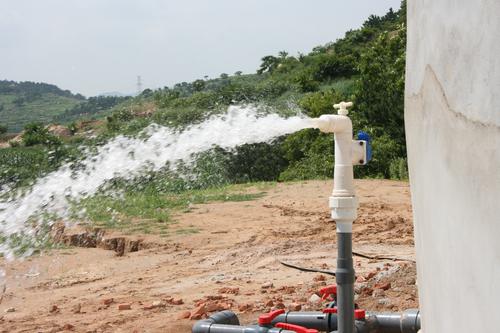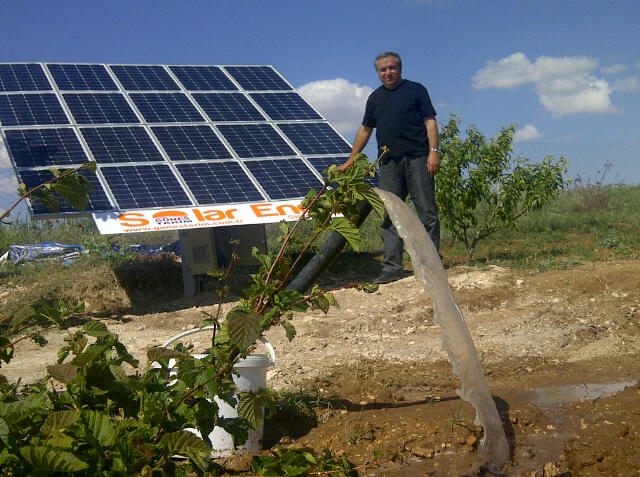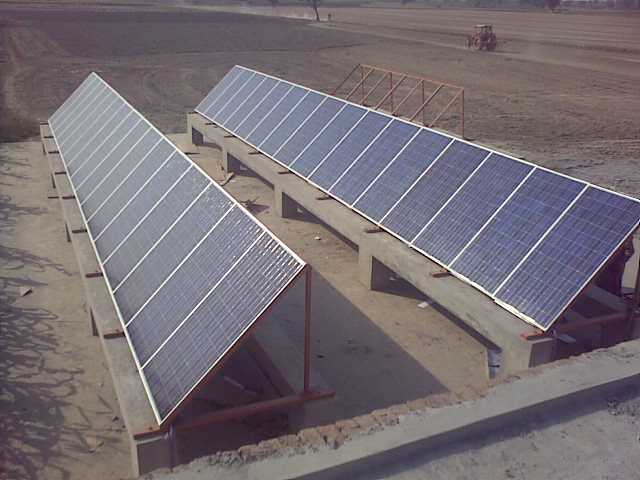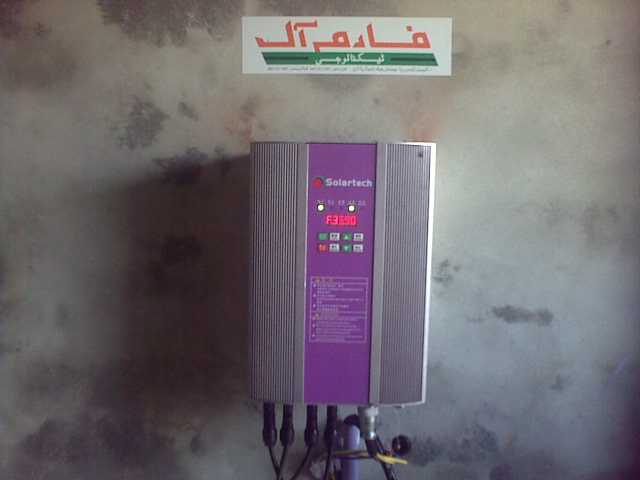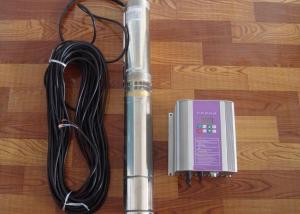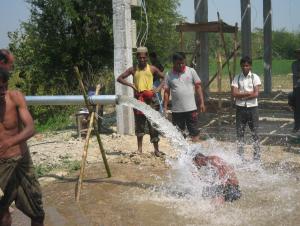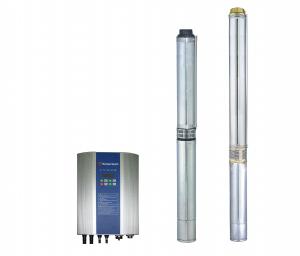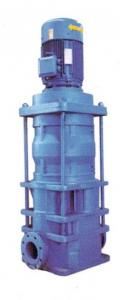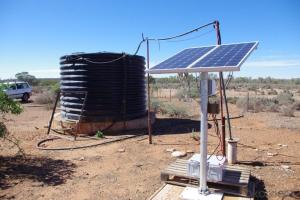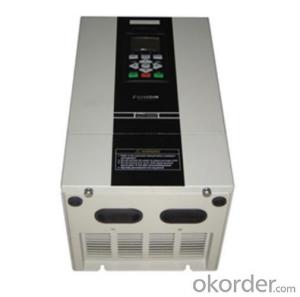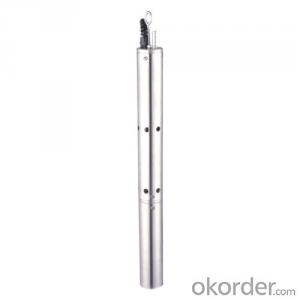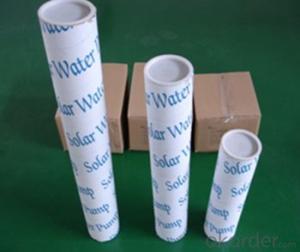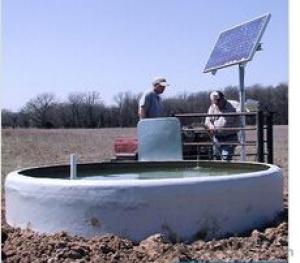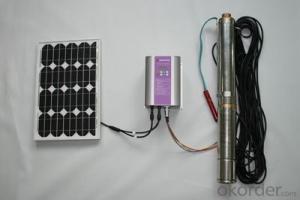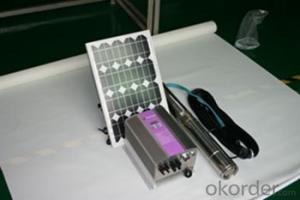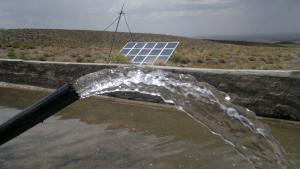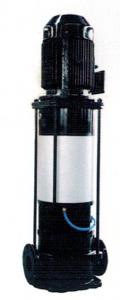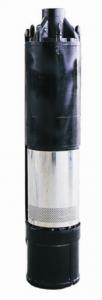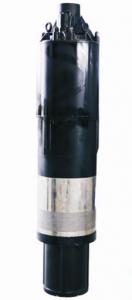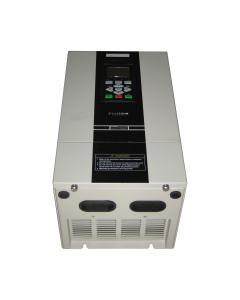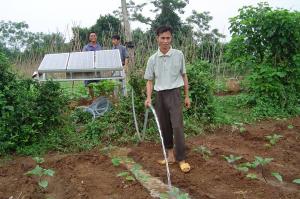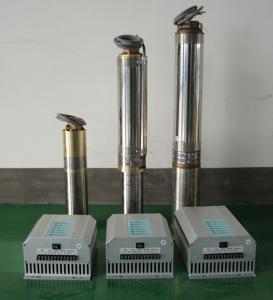Wbs Solar Pump AC Solar Agricultural Irrigation Systems
- Loading Port:
- Shekou
- Payment Terms:
- TT OR LC
- Min Order Qty:
- 20 set
- Supply Capability:
- 800000 set/month
OKorder Service Pledge
OKorder Financial Service
You Might Also Like
Products
Solar Pumping System can be applied to daily use (ground water), agricultural irrigation, forestry irrigation, desert control, pasture animal husbandry, water supply for islands, wastewater treatment engineering, and so on. Solar water pump System is dispensed with energy storing devices, and stores water instead of electricity. It improves the reliability of the device, at the same time, it lowers the construction and maintenance costs of the irrigation system dramatically.
In recent years, with the promotion of the utilization of new energy resources, Solar Pumping System is more and more used in municipal engineering, city centre squares, parks, tourist sites, resorts and hotels, the landscapes and fountain irrigation systems in the residential areas.
Technical Features
Optimization of Single Pump System
A single solar irrigation system consists of only one pump, a power -matched solar array and an inverter . The aim of optimization is to reduce the amount of PV modules as much as possible on the premise of filling the requirement of head and capacity. The rotational speed of pump is regulated according to the irradiation on the solar array; when the sunlight reaches its peak, the pump runs at the rated speed, and the output approaches the peak power of the solar array; when the sunlight is less abundant, the speed of pump varies bellow the range of the rated speed; when the speed as low as the capacity becomes zero, the solar pumping system stops working. So, there are big differences between solar irriation systems and traditional pumping systems in system design, and the system should be optimized according to the requirements of head, capacity, and local conditions of sunlight.
•Determine the optimal average daily operating time and the range of speed governing.
•Choose the optimal head and capacity of the pump.
•Determine the maximum power of PV modules, the best working voltage and method of connection.
Optimization of Multi-pump Systems:
There are several pumps in a multi-pump system. The pumps can be driven either by only one high-power inverter, or by several matching inverters. In the case of large capacity demand, the operation of the multi-pump system is more flexible. By switching solar arrays and pumps, all of the pumps run in MPPT mode when the sunlight is abundant, while some pumps will be shut down and all solar arrays supply power intensively for the rest running pumps when irradiation is weak. Based on the optimization of single pump system, the range of speed can be further optimized, and the photovoltaic(PV) pumping system always works with high efficiency.
Product Specifications
Model | Rated Power ( kW ) | Rated Voltage ( V ) | Head ( M ) | Daily Flow ( ㎥/ D ) |
PS550 | 0.55 | 220 | 15-70 | 40-1 |
PS750 | 0.75 | 220 | 6-81 | 100-1 |
PS1100 | 1.1 | 220 | 8-93 | 100-1 |
PS1500 | 1.5 | 220 | 7-128 | 130-1 |
PS9200 | 9.2 | 380 | 20-140 | 500-40 |
PS11000 | 11 | 380 | 23-159 | 500-40 |
PS13000 | 13 | 380 | 27-189 | 500-40 |
PS15000 | 15 | 380 | 31-208 | 500-40 |
PS37000 | 37 | 380 | 40-150 | 700-210 |
PS45000 | 45 | 380 | 50-180 | 700-210 |
PS55000 | 55 | 380 | 65-200 | 700-210 |
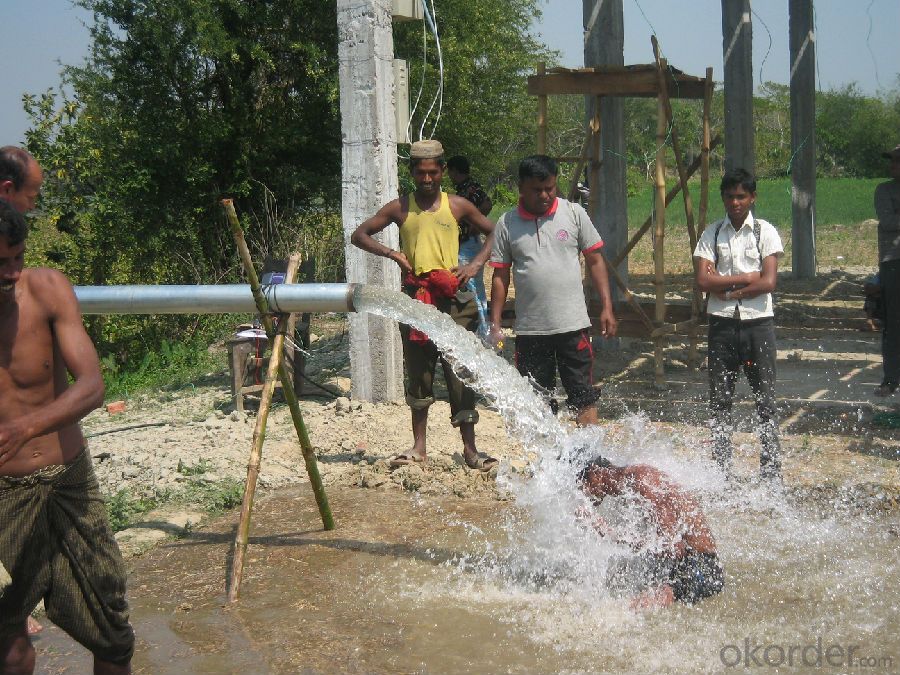
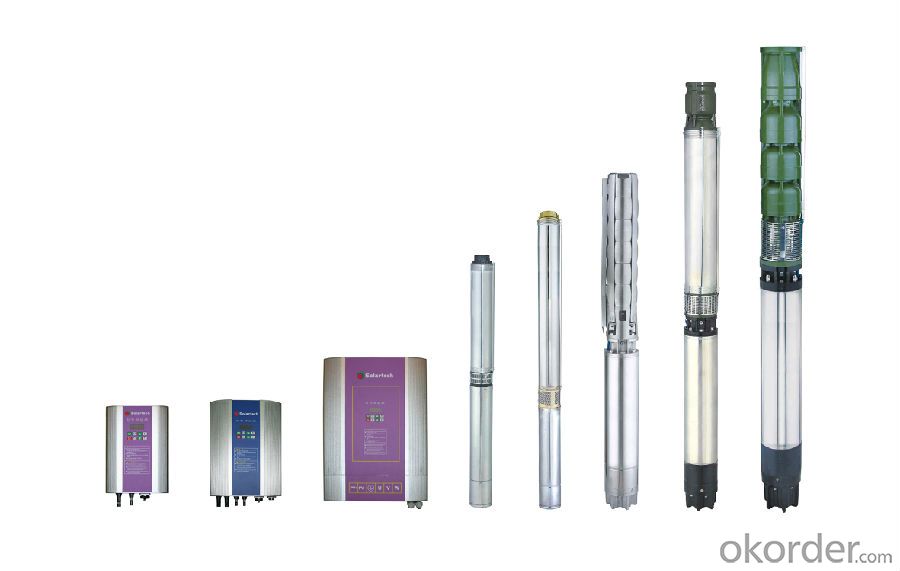
- Q: Can a solar pump be used in combination with a drip irrigation system?
- A solar pump is capable of being utilized alongside a drip irrigation system. In reality, opting for a solar pump can prove to be an economical and energy-conserving choice when it comes to powering a drip irrigation system. Solar pumps operate by converting sunlight into electricity through photovoltaic panels, which is then utilized to power the pump. This eradicates the necessity for grid electricity or generators that rely on fuel, thus making it a sustainable and environmentally-friendly option. Drip irrigation systems are specifically designed to supply water directly to plant roots at a slow and regulated pace, thereby minimizing water wastage and evaporation. By combining a solar pump with a drip irrigation system, farmers and gardeners can ensure proper water distribution to crops at the appropriate time, while simultaneously reducing water consumption and optimizing plant growth. Solar pumps can be adjusted to meet the precise water requirements of a drip irrigation system, allowing for accurate control over water flow and delivery. Additionally, they can be equipped with sensors and controllers to automate the irrigation process, further enhancing efficiency and reducing manual labor. Moreover, utilizing a solar pump for drip irrigation can prove to be particularly advantageous in regions with limited or unreliable access to electricity. The sun is an abundant and cost-free source of energy, rendering solar pumps a feasible solution for remote or off-grid locations. In conclusion, a solar pump unquestionably has the potential to be utilized in conjunction with a drip irrigation system, offering a sustainable, cost-effective, and efficient means of watering crops and plants.
- Q: Can a solar pump be used for residential swimming pool heating?
- Yes, a solar pump can be used for residential swimming pool heating. Solar pumps are designed to circulate water using energy from the sun, making them a sustainable and cost-effective solution for heating pool water. By utilizing solar energy, these pumps can effectively heat the pool water, providing a comfortable swimming experience without the need for traditional heating systems that rely on electricity or gas. Additionally, solar pumps are environmentally friendly, as they reduce carbon emissions and dependency on non-renewable energy sources. Overall, a solar pump is a great option for residential swimming pool heating, offering both economic and environmental benefits.
- Q: Are there any limitations to the flow rate of water a solar pump can handle?
- Yes, there are limitations to the flow rate of water that a solar pump can handle. The flow rate of a solar pump is usually determined by the size and capacity of the pump, as well as the amount of sunlight available to power the pump. The size and capacity of the pump will determine its maximum flow rate. If the pump is too small or has a limited capacity, it may not be able to handle high flow rates of water. In such cases, the pump may struggle to deliver water efficiently or may even fail to pump water at all. Additionally, the amount of sunlight available to power the solar pump can also impact its flow rate. Solar pumps rely on solar panels to convert sunlight into electricity, which is then used to power the pump. If there is insufficient sunlight or if the solar panels are not properly positioned or maintained, the pump may not receive enough power to operate at its maximum flow rate. It is also worth noting that the flow rate of a solar pump may vary depending on the time of day and weather conditions. For example, during cloudy days or in the early morning or late afternoon when the sun is less intense, the flow rate may be reduced. Therefore, while solar pumps are a sustainable and eco-friendly solution for water pumping, they do have limitations in terms of flow rate. It is important to carefully consider the size and capacity of the pump and ensure proper maintenance of the solar panels to optimize the flow rate of water.
- Q: Can a solar pump be integrated with existing water infrastructure?
- Yes, a solar pump can be integrated with existing water infrastructure. Solar pumps can be retrofitted into existing water systems, allowing them to operate independently of the grid and provide a sustainable and cost-effective solution for pumping water. The integration process may involve connecting the solar pump to the existing pipelines, storage tanks, or other components of the water infrastructure, ensuring a seamless incorporation of solar power into the system.
- Q: How does the size of a solar panel affect the performance of a solar pump?
- The size of a solar panel directly affects the performance of a solar pump. A larger solar panel can generate more electricity, which in turn provides more power to the pump. This leads to increased water flow and higher efficiency, allowing the pump to operate more effectively, especially in low-light conditions. Additionally, a larger panel can also store excess energy in batteries, ensuring continuous operation even during cloudy periods or at night.
- Q: Can solar pumps be used for water supply in schools or orphanages in developing countries?
- Yes, solar pumps can indeed be used for water supply in schools or orphanages in developing countries. Solar pumps are an excellent solution for areas with limited access to electricity or unreliable power supply. They provide a sustainable and cost-effective way to extract and distribute water, ensuring a reliable water source for drinking, sanitation, and other essential needs in schools and orphanages. Additionally, solar pumps require minimal maintenance and have a long lifespan, making them suitable for remote and resource-constrained regions.
- Q: Can a solar pump be used to create a water fountain?
- Yes, a solar pump can definitely be used to create a water fountain. Solar pumps are designed to operate with solar energy, which means they can be placed in areas without access to electricity. By connecting the solar pump to a water source, it can circulate and push the water through a fountain nozzle, creating a beautiful water fountain. This makes solar pumps a sustainable and eco-friendly option for creating water features.
- Q: Can a solar pump be used in areas prone to lightning strikes?
- Yes, a solar pump can be used in areas prone to lightning strikes. Solar pumps are generally safe to use as they do not require any electrical connections to the grid, reducing the risk of lightning damage. However, it is still recommended to take precautions such as installing a lightning protection system to ensure the safety of the pump and any associated equipment.
- Q: Can a solar pump be used for water supply in remote mountain regions?
- Yes, a solar pump can be used for water supply in remote mountain regions. Solar pumps are a sustainable and efficient solution for remote areas as they utilize solar energy to power the pump and draw water from underground sources. This eliminates the need for electricity or fuel, making it a cost-effective and environmentally-friendly option for water supply in such regions.
- Q: Can a solar pump be used in areas with high levels of sediment in water?
- Yes, a solar pump can be used in areas with high levels of sediment in water. However, it is important to note that frequent maintenance and proper filtration systems may be required to prevent clogging and damage to the pump.
Send your message to us
Wbs Solar Pump AC Solar Agricultural Irrigation Systems
- Loading Port:
- Shekou
- Payment Terms:
- TT OR LC
- Min Order Qty:
- 20 set
- Supply Capability:
- 800000 set/month
OKorder Service Pledge
OKorder Financial Service
Similar products
Hot products
Hot Searches
Related keywords






